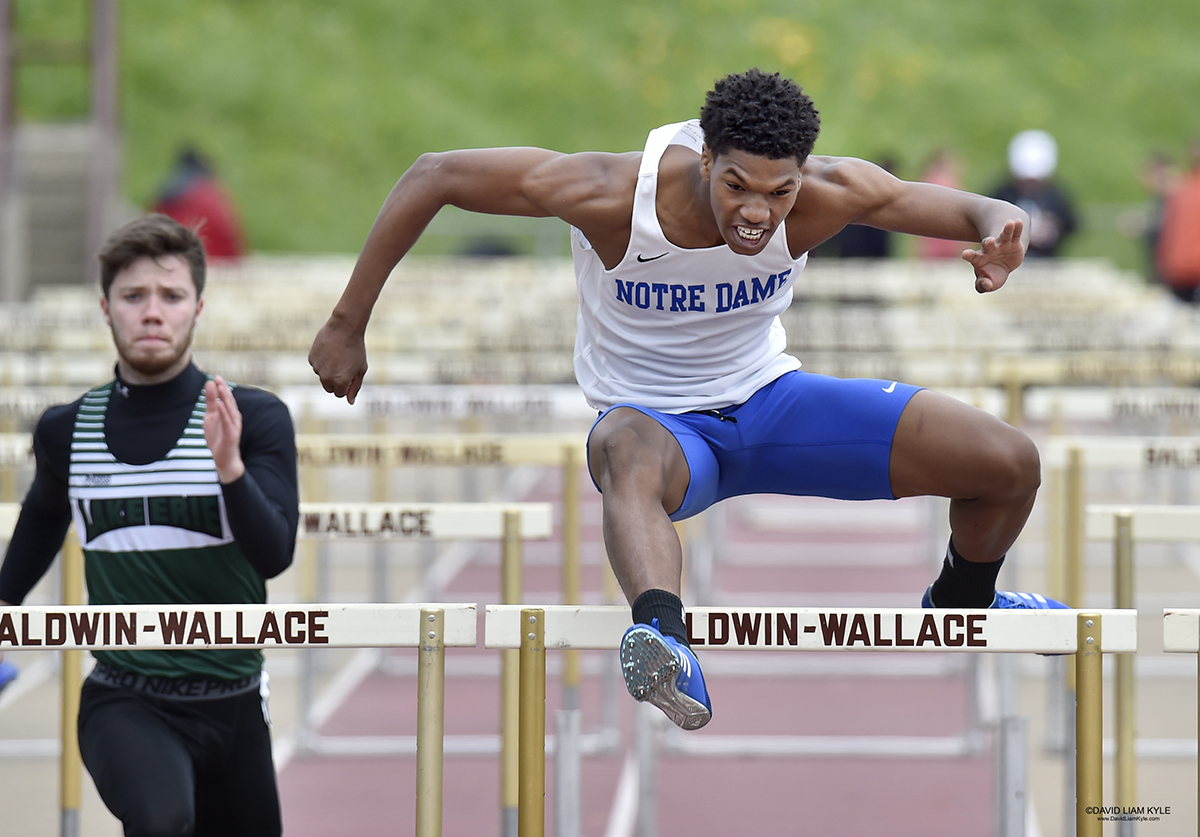In the Middle of the Action
David Kyle captures the drama and emotion of sporting events with the Tamron SP 150-600 G2 lens.
More Photo Tips | Video Gallery | Photo Gallery
By Jenn Gidman
Images by David Liam Kyle
David Liam Kyle's imaging origin story started in London in the late '70s, during a time when he was playing pro basketball in Holland. A teammate asked him along for a night of photographing England's capital, and from that moment on, David found himself fully and inextricably immersed in the photographic arena.
Now, more than three decades later, David can still be spotted on the courts and in the field as a sports photographer, but he has also branched out over the years to build up an impressive portfolio that includes nature, landscape, and fine-art photos, as well as photojournalism images. "Having a versatile skill set keeps me motivated to learn new things and experiment with different techniques," David says. "And that variety in my photo assignments allows me to have a different perspective for each assignment. After a season of shooting NBA basketball, for example, it's a nice change of pace to photograph nature and work on my fine-art photography."
The newest addition to David's lens arsenal: the Tamron SP 150-600mm VC G2 lens. "This lens is a dream to handle—very light, easy to carry, and quick to grab and use with my sling strap," he says. "I'm also able to achieve clear, sharp images without a monopod or tripod. The G2 enables me to change photo positions without carrying a lot of gear and gives me the ability to compose photos with exactly the right light and background I'm looking for."
When it comes to his sports photography, David tries to use each image to reveal a story about the game or event by capturing the excitement, drama, and emotion of the moment. "Having a long lens like the 150-600mm G2 keeps me from being in the way of the action, while still allowing me to capture it all," he says. "I'm also always on the lookout for clean backgrounds or appealing compositional lines that lead the viewer into my subject for a pleasing action photo."
David prefers bright yet overcast days for optimum shots from any angle, but he'll finagle the light as much as he can on days with a lot of sunshine. "You just need to control your exposure via your ISO, shutter speed, and aperture," he says. "For outdoor sports, I usually manually set my aperture and shutter speed and use auto ISO."
The focal-length versatility available with the 150-600 G2 allows David to cover action from a distance, but also capture close action shots without having to change cameras, lenses, or his position. "That means I'm able to capture more key moments," he says. "With that zoom range from 150mm to 600mm, for example, I was able to zoom wider from where I was standing to capture the play at home plate in this image."
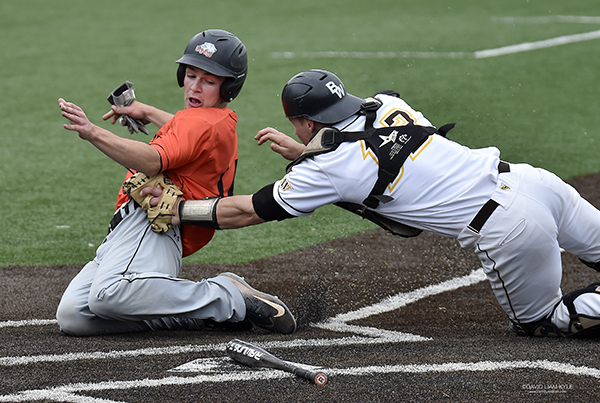
210mm, F/5.3, 1/2000th sec., ISO 400
Using the 600mm end of the lens allows David to be more creative in terms of where he's situated, while still enabling him to shoot tight action as athletes run directly toward him. "Shooting at 600mm from an upper position for this image of a distance race, for instance, I was able to capture a clean composition with the first lap as all of the runners came at me on the first straightaway," he says.
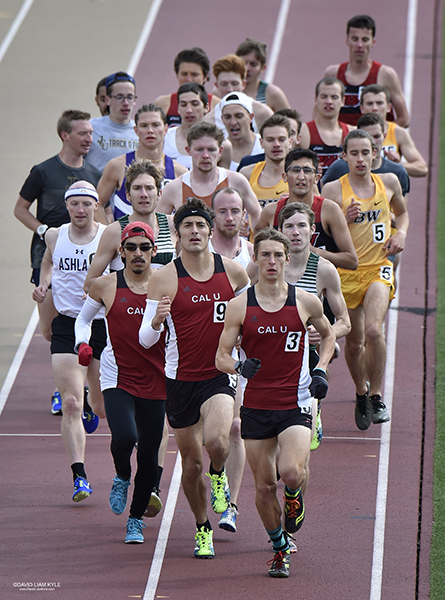
600mm, F/8, /1000th sec., ISO 640
Having the lens at 600mm also allowed him to stand just off the curve of the track and shoot straight on as a hurdler cleared his final hurdle. "Shooting wide open with a fast shutter speed helped isolate the runner from the background and froze the action," he says.
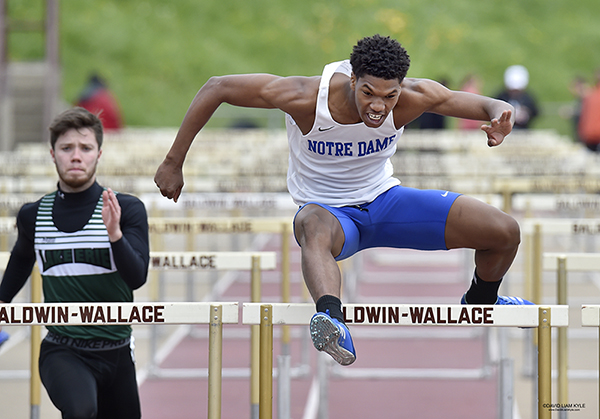
450mm, F/7.1, 1/1600th sec., ISO 720
David typically uses a fast shutter speed—at least 1/1000th of a second—to freeze that action and prevent motion blur in his action shots. "If I do happen to shoot at slower shutter speeds, the third VC mode on the G2 lens is my best option to minimize camera shake and ensure my images stay sharp," he says.
One of David's favorite events to shoot: the steeplechase obstacle race. "I was on the curve just off the track here, shooting tight at 600mm, but after the runners started heading through, I zoomed wider to 460mm to capture more of the splashing water," he says. "I had numerous photos to choose from, but in the end, I preferred the composition of the splashing water in this image."
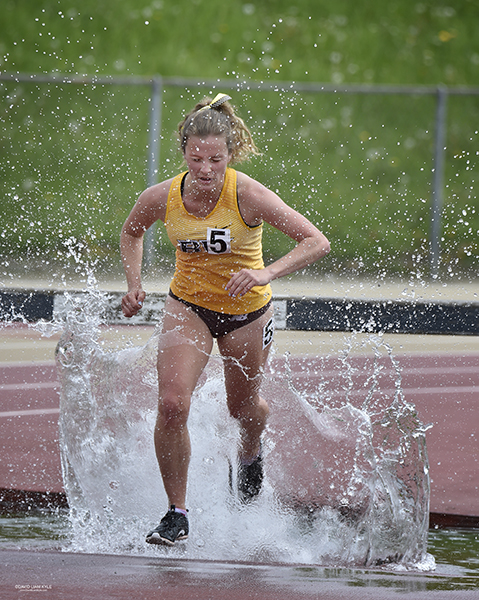
460mm, F/8, 1/1000th sec., ISO 360
David uses an AFC single focal point in nearly all of his sports photography. "I like to control what the lens is focusing on and try to keep my focus point on the subject's face or chest as much as possible," he says. He also appreciates how the 150-600 G2 focuses on and tracks the athletes in front of his camera.
"My images all come out tack-sharp; once I lock on an athlete, everything stays on track," he says. "I've photographed several different races, for example, including fast 100mm dashes, and every image is super-sharp. The lens follows the runners as they approach me and the finish line."
Shooting wide open with a telephoto also creates the bokeh David desires, which in turn helps his subjects pop off the page. He used that bokeh to his advantage in this image of a baseball pitcher. "By dropping the background out, it allows the viewer's eye to go directly to the intensity of the pitcher's eyes," he explains.

600mm, F/7.1, 1/2000th sec., ISO 400
Staying focused on the game during breaks and planning ahead for scheduled events helps David to anticipate and visualize what kind of images he'd like to capture. "For sports such as basketball, track, and football, I try to figure out what the next play will be," he says. "For example, in baseball: Is there a runner on first base, and will he try and steal second? Will the runner on second head for home on a hit? Will the team celebrate on that final play that wins a game?"
And that's exactly what was going through his mind as he was positioned on the same side as a soon-to-win baseball team's dugout. "They started to rally in the last inning," he says. "I had a feeling they'd come back to win, so I headed over to the other side of the field and positioned myself between home plate and first base."
With that wide focal-length range at his fingertips, David knew he'd be able to shoot a play at home base, as well as capture the celebration of the dugout and anything else that happened. "I set my exposure for the shade in the dugout and was ready when the batter made the game-winning hit," he says. "The team stormed the field in jubilation, running toward the teammate who had the winning hit at first base. I was able to capture the celebration, but I also zoomed wide so you could see the school's banner in the background to add that extra visual element and offer a little more of the team's backstory."
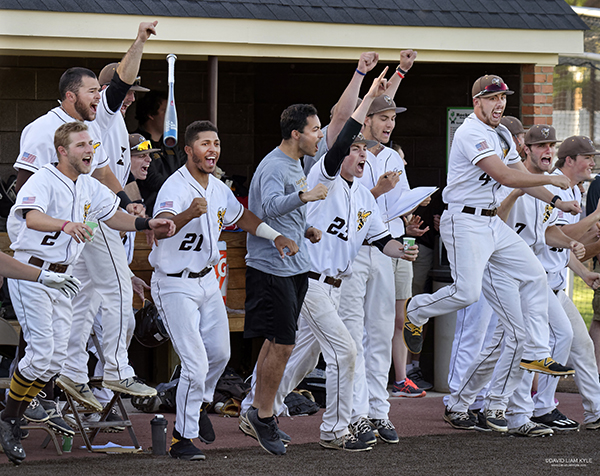
250mm, F/8, 1/1000th sec., ISO 1000
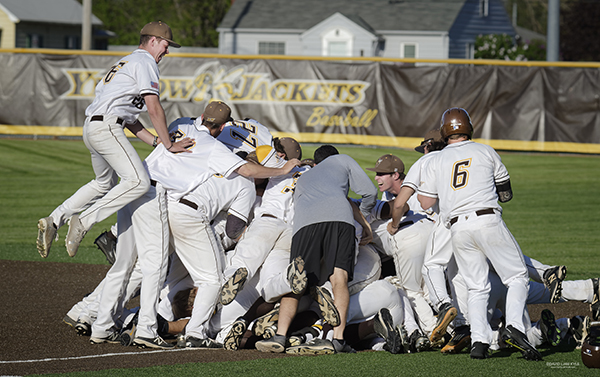
250mm, F/8, 1/1000th sec., ISO 280
To see more of David Kyle's work, go to www.davidliamkyle.com.
More Photo Tips | Watch Videos | Learn More About Tamron Lenses | Photo Gallery
